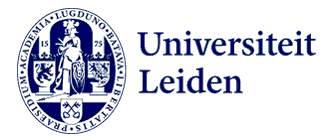Karakteristik Kuantitatif dan Jarak Genetik Beberapa Galur Ayam Lokal
Quantitative Characteristics and Genetic Distance of Some Local Chicken Strains
DOI:
https://doi.org/10.46549/jipvet.v11i2.110Keywords:
Local Chicken, Quantitatif Characteristic, Genetic DistanceAbstract
Abstract
The research of this study aims to know quantitative characteristics and genetic distance of several local chicken strains. The research material is Super chicken, KUB chicken, and Kampung chicken. The method used was an experiment with a sample of 82 chickens from each strain. Retrieval of BW and AVG data are collected every month until the age of 2 months, while body measurements are taken at the age of 2 months. The data collected are quantitative characteristics includes body weight, weight gain, beak length, beak width, head length, head circumference, head height, neck length, neck circumference, wing length, back length, back height, back height, chest length, chest width, shank length, shank circumference, tibia length, tibia circumference, third finger length and pubic bone distance. Data collected were analyzed using t-test to see the difference in BB, PBB, and body measurements using Minitab statistical software 18. Mahalanobis distance approach with a matrix of variance between variables based on chicken strains was arranged into a matrix to determine the discriminant function and then form phylogenetic trees by using the MEGA X program via the UPGMA method. Body weight, average daily gain, and body sizes of Super chickens are bigger than other strains of chickens, while the smallest is owned by Kampung chickens. The closest genetic distance matrix was shown by Super chickens to KUB chickens (4.08) and the farthest genetic distance was shown by KUB chickens to Kampung chickens (13.87).
Keywords: Genetic distance; Local chicken; Quantitatif characteristic
Abstrak
Tujuan penelitian ini untuk mengetahui karakteristik kuantitatif dan jarak genetik beberapa galur ayam lokal. Materi penelitian ini adalah ayam Super, ayam KUB, dan ayam Kampung. Metode yang digunakan adalah eksperimen dengan sampel 82 ekor ayam jantan/betina yang dipelihara umur 1 hari sampai umur 2 bulan pada masing-masing galur. Pengambilan data BB dan PBB diambil pada setiap bulan hingga ayam berumur 2 bulan, sedangkan ukuran-ukuran tubuh diambil pada umur 2 bulan. Data yang dihimpun adalah karakteristik kuantitatif meliputi bobot badan, pertambahan bobot badan, panjang paruh, lebar paruh, panjang kepala, lingkar kepala, tinggi kepala, panjang leher, lingkar leher, panjang sayap, panjang punggung, tinggi punggung, panjang dada, lebar dada, panjang shank, lingkar shank, panjang tibia, lingkar tibia, panjang jari ketiga dan jarak tulang pubis. Data yang dikumpulkan dianalisis menggunakan uji-t untuk melihat perbedaan BB, PBB, dan ukuran-ukuran tubuh menggunakan perangkat lunak statistika Minitab 18. Pendekatan jarak Mahalanobis dengan matriks peragam antara peubah berdasarkan galur ayam disusun menjadi sebuah matriks untuk mengetahui fungsi diskriminan kemudian membentuk pohon filogenetik dengan menggunakan program MEGA X melalui metode UPGMA. BB, PBB, dan ukuran-ukuran tubuh ayam Super lebih besar dibandingkan dengan galur ayam lainnya, sedangkan yang paling kecil dimiliki oleh ayam Kampung. Nilai matrik jarak genetik terdekat ditunjukkan oleh ayam Super dengan ayam KUB (4,08) dan jarak genetik terjauh ditunjukkan oleh ayam KUB dengan ayam Kampung (13,87).
Kata Kunci: Ayam lokal; Jarak genetik; Karakteristik kuantiatif
Downloads
References
Ashifudin, M. 1, E. Kurnianto, & Sutopo. 2017. Karakteristik morfometrik ayam kedu jengger merah dan jengger hitam generasi pertama di satker ayam Maron-Temanggung. Jurnal Ilmu Ternak. 17(1):40–46.
Bell, D. D & W.D. Weaver Jr. 2002. Comercial Chicken Meat and Egg Production 5 th Edition. Springer Science and Business Medial Inc.New York.
Hummairah, R. Hamdan, dan A.H. Daulay. 2016. Identifikasi morfometriks dan jarak genetik ayam kampung (Domesticated chicken) di Kabupaten Batubara. Jurnal Peternakan Integratif. 03(03):329–343.
Kurnia, Y. 2011. Morfometrik Ayam Sentul, Kampung dan Kedu pada Fase Pertumbuhan dari Umur 1-12 Minggu. Skripsi. Institut Pertanian Bogor. Bogor.
Nei, M. 1987. Molecular Evolutionary Genetics. Columbia University Press. New York.
Pinem, U., Hamdan, dan N. D. Hanafi. 2015. Estimasi jarak genetik dan faktor peubah pembeda rumpun kelinci melalui analisis morfometrik. Jurnal Peternakan Integratif. 02(3): 264–286.
Rajab & B. J. Papilaya. 2012. Sifat kuantitatif ayam kampung lokal pada pemeliharaan tradisional. Jurnal Ilmu Ternak dan Tanaman. 2(2):61–64.
Rangkuti, N.A., Hamdan, A.H. Daulay. 2016. Identifikasi morfometriks dan jarak genetik ayam kampung di Labuhanbatu Selatan. Jurnal Peternakan Integratif. 3(1): 96–119.
Subekti, K dan F. Arlina.2011. Karakteristik genetik eksternal ayam kampung di Kecamatan Sungai Pagu Kabupaten Solok Selatan. Jurnal Ilmiah Ilmu-Ilmu Peternakan. Vol. XIV(2): 74-86.
Tamura, K., G. Stecher, D. Peterson, A. Filipski, dan S. Kumar. 2013. MEGA6: molecular evolutionary genetics analysis version 6.0. Molecular Biology and Evolution. 30(12): 2725–2729.
Triyanto. 2009. Pengenalan Minitab. Program Studi Pendidikan Matematika. Universitas Sebelas Maret. Surakarta.
Urfa, S., H. Indijani, dan W. Tanwiriah. 2017. Model kurva pertumbuhan ayam kampung unggul balitnak ( KUB ) umur 0-12 minggu. Jurnal Ilmu Ternak. 17(1):59–66.
Downloads
Published
How to Cite
Issue
Section
License
License and Copyright Agreement
In submitting the manuscript to the journal, the authors certify that:
- They are authorized by their co-authors to enter into these arrangements.
- The work described has not been formally published before, except in the form of an abstract or as part of a published lecture, review, thesis, or overlay journal. Please also carefully read Jurnal Ilmu Peternakan dan Veteriner Tropis (Journal of Tropical Animal and Veterinary Science) Posting Your Article Policy at https://journal.fapetunipa.ac.id/index.php/JIPVET/publicationethics
- That it is not under consideration for publication elsewhere,
- That its publication has been approved by all the author(s) and by the responsible authorities “tacitly or explicitly“ of the institutes where the work has been carried out.
- They secure the right to reproduce any material that has already been published or copyrighted elsewhere.
- They agree to the following license and copyright agreement.
Copyright
Authors who publish with Jurnal Ilmu Peternakan dan Veteriner Tropis (Journal of Tropical Animal and Veterinary Science) agree to the following terms:
- Authors retain copyright and grant the journal right of first publication with the work simultaneously licensed under a Creative Commons Attribution License (CC BY-NC-SA 4.0) that allows others to share the work with an acknowledgment of the work's authorship and initial publication in this journal.
- Authors are able to enter into separate, additional contractual arrangements for the non-exclusive distribution of the journal's published version of the work (e.g., post it to an institutional repository or publish it in a book), with an acknowledgment of its initial publication in this journal.
- Authors are permitted and encouraged to post their work online (e.g., in institutional repositories or on their website) prior to and during the submission process, as it can lead to productive exchanges, as well as earlier and greater citation of published work.

This work is licensed under a Creative Commons Attribution-NonCommercial-ShareAlike 4.0 International License.

























.png)
